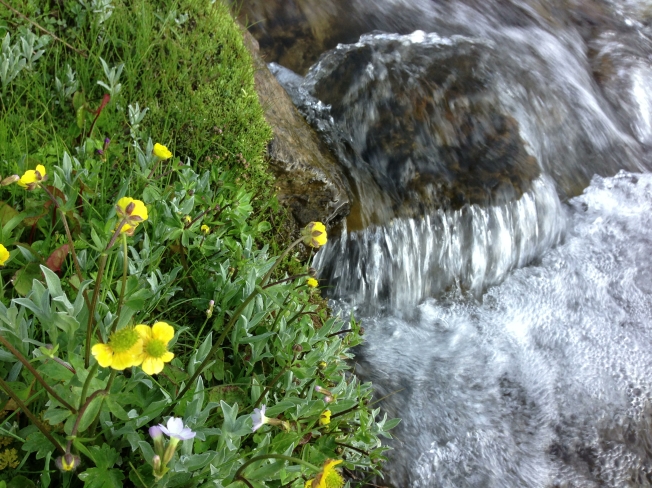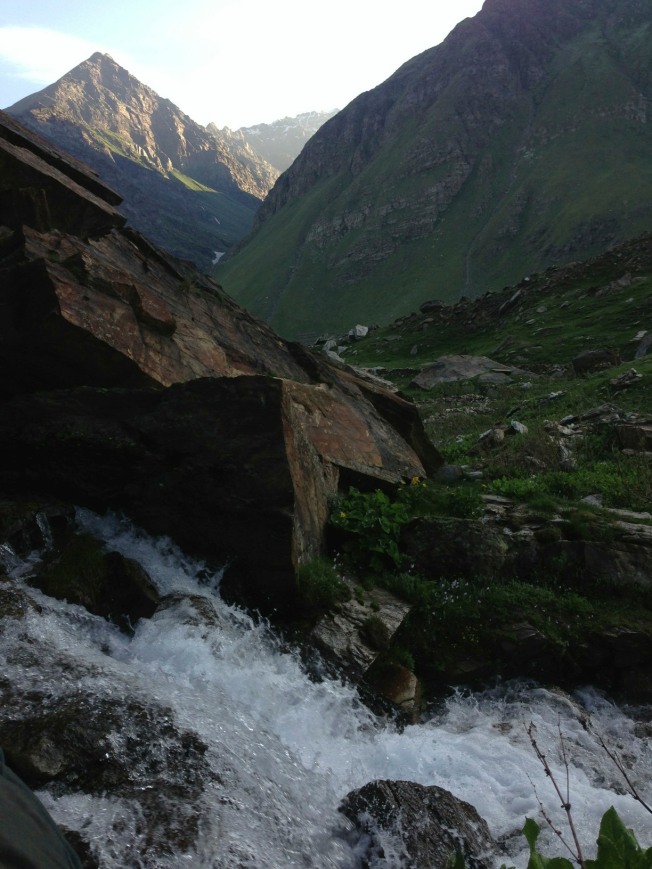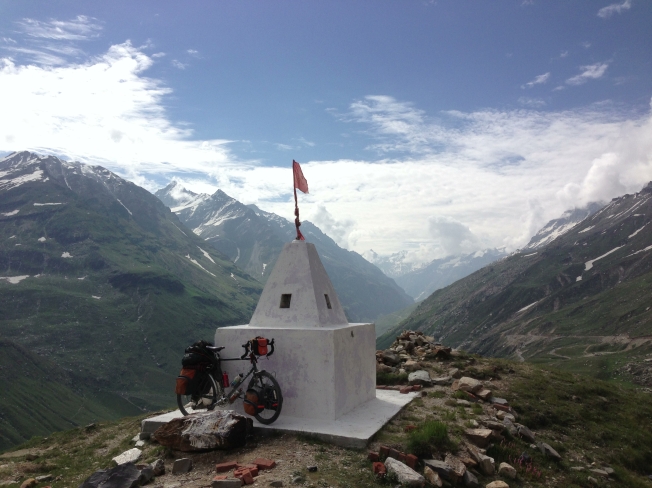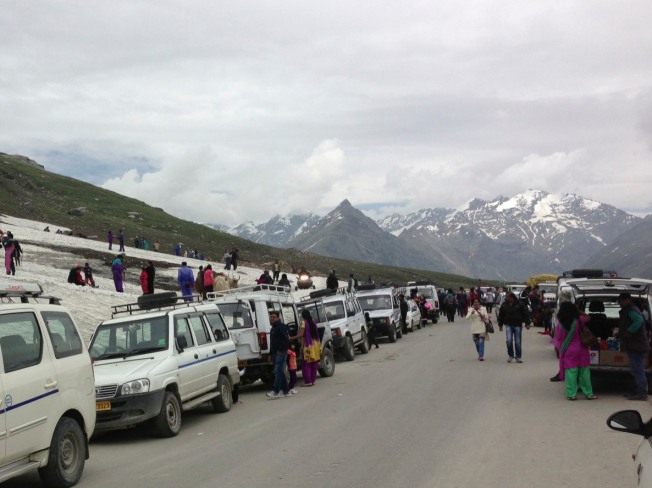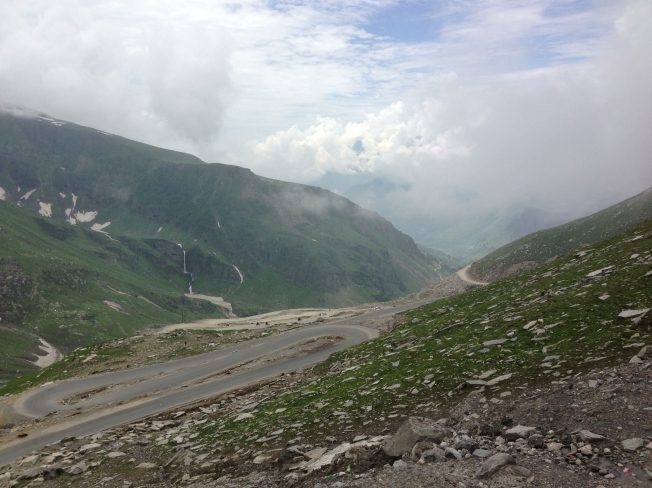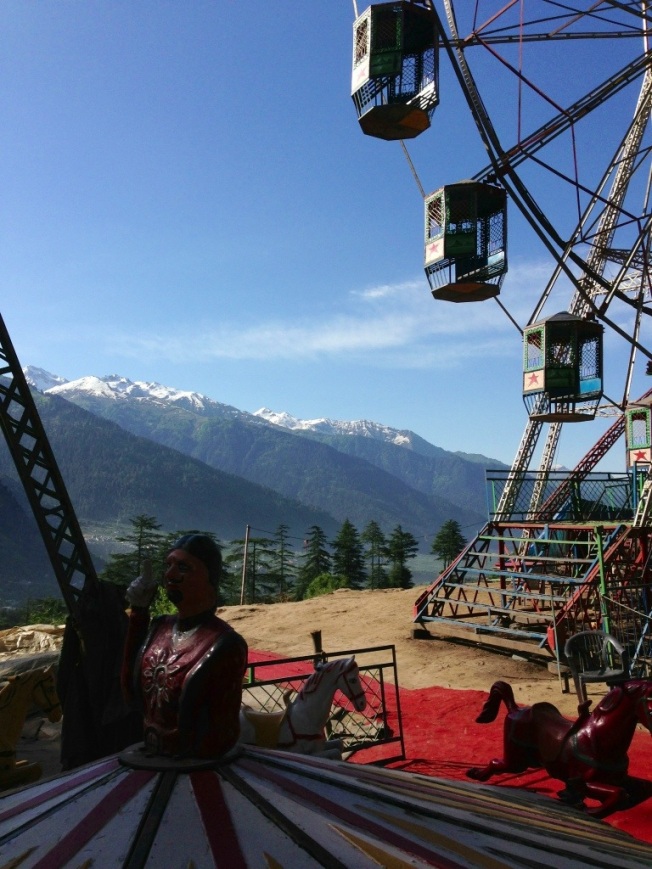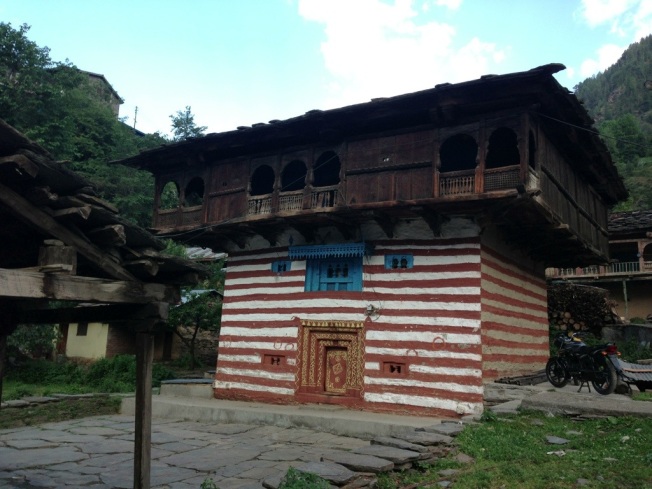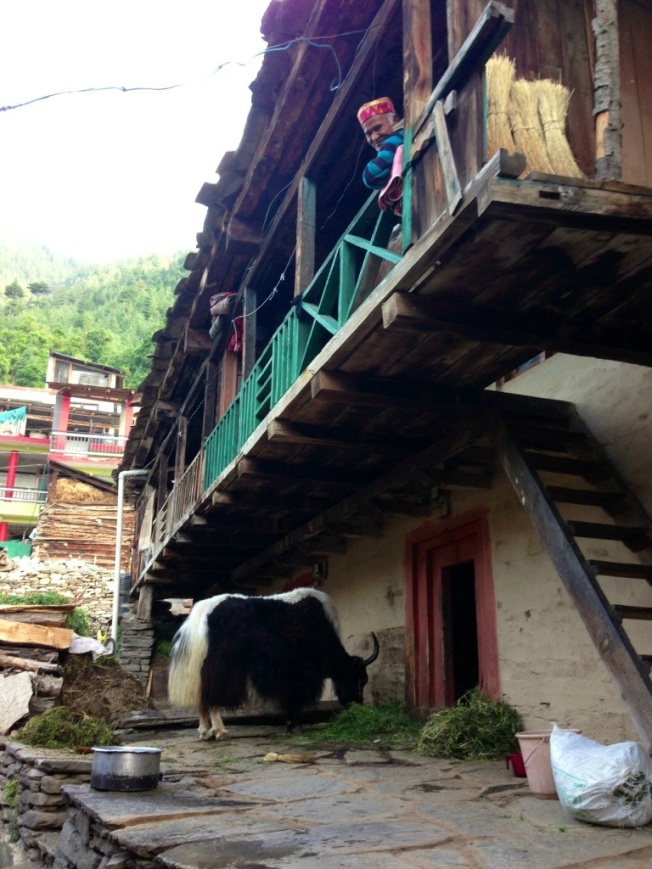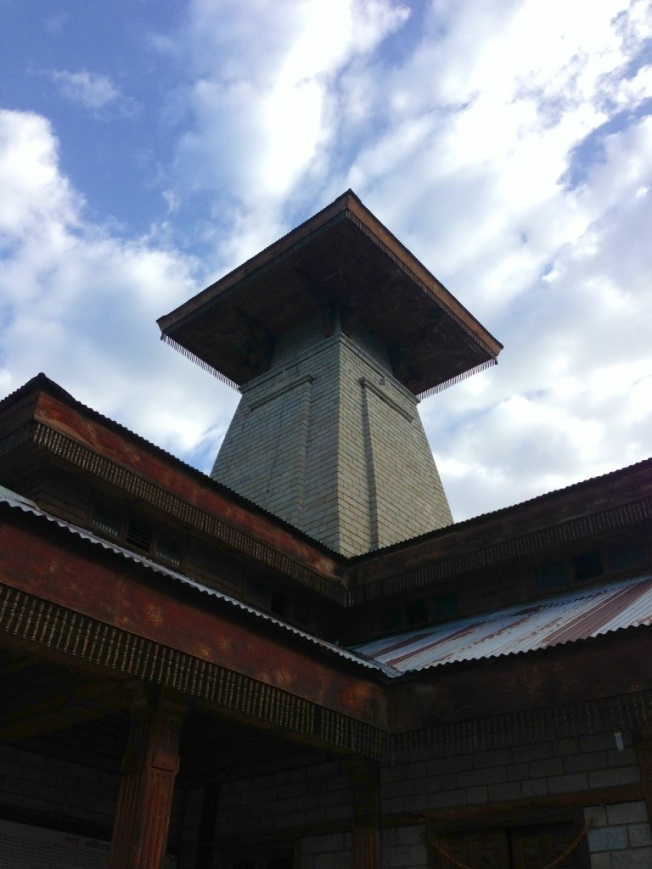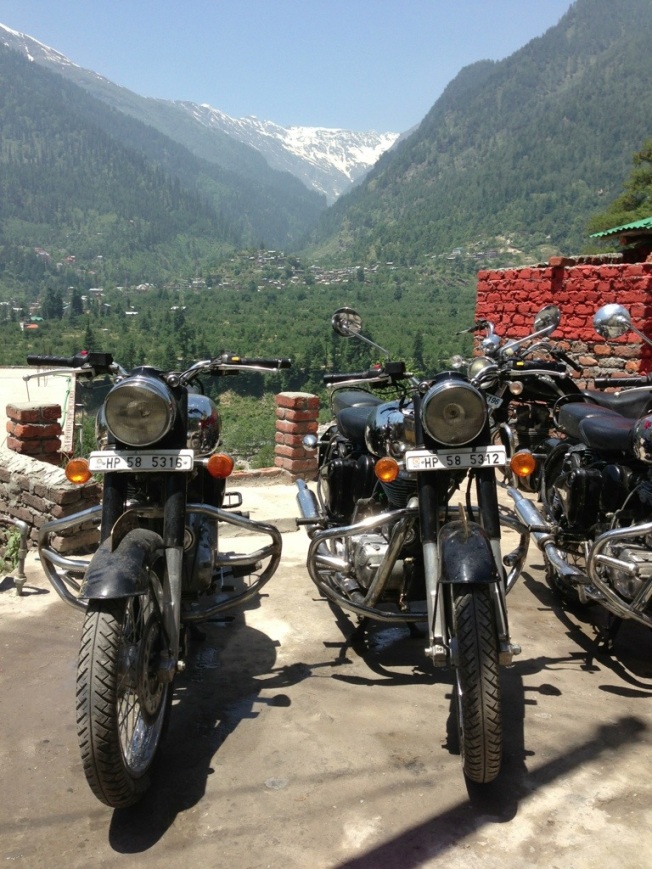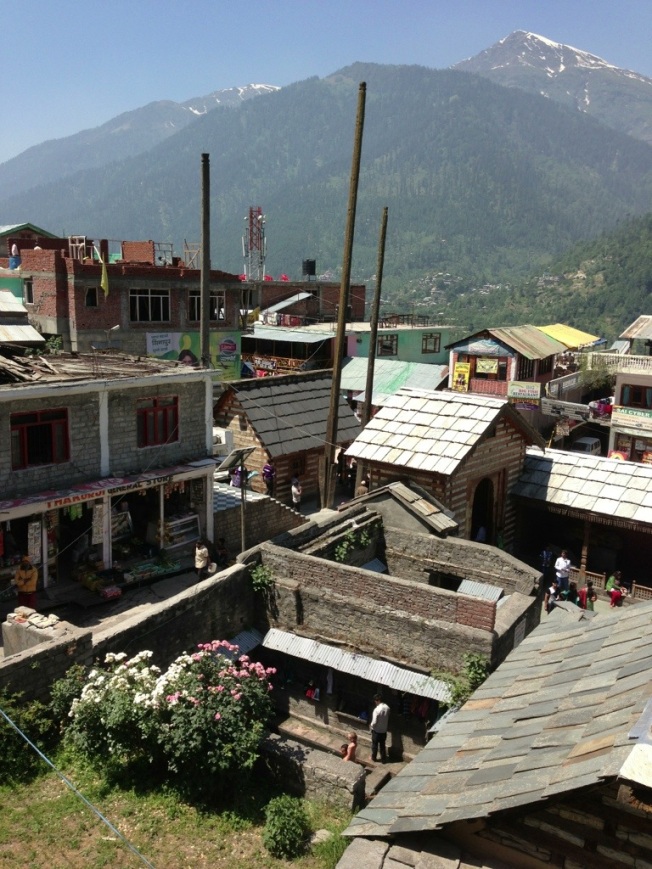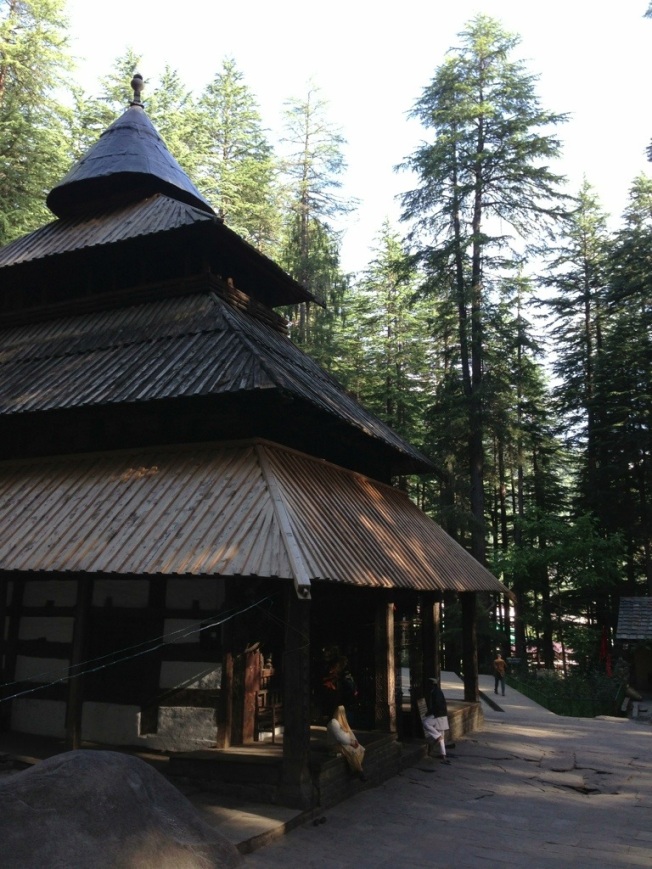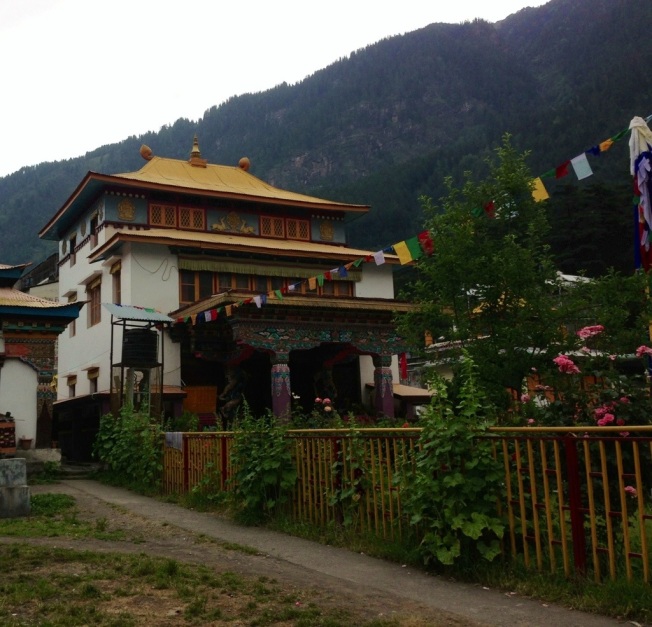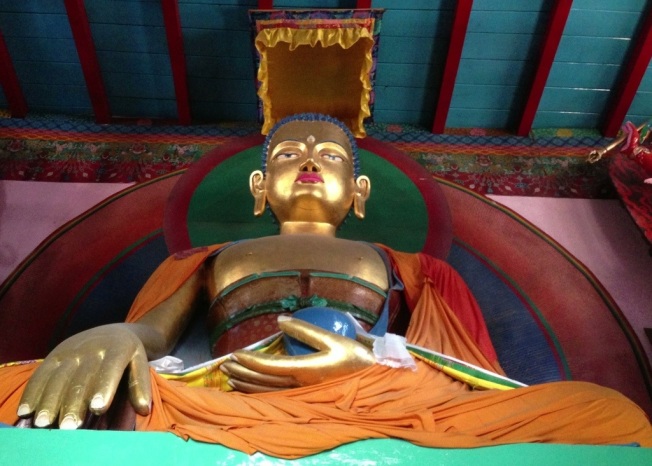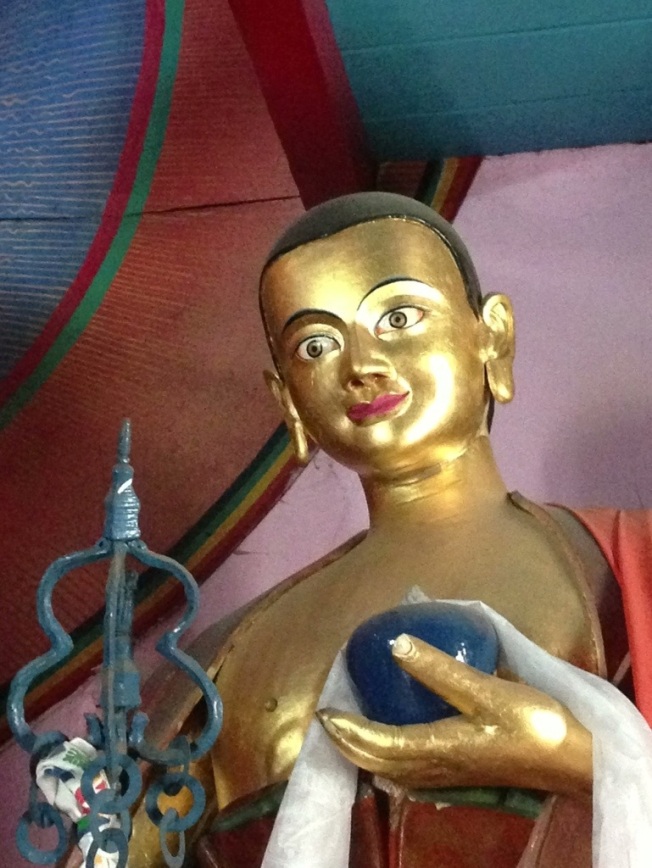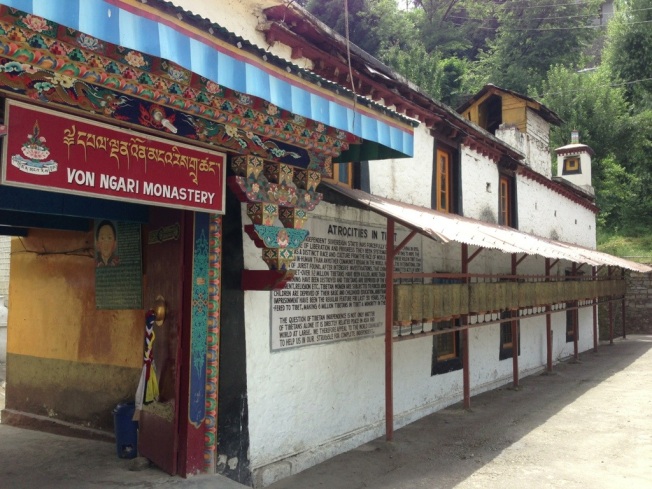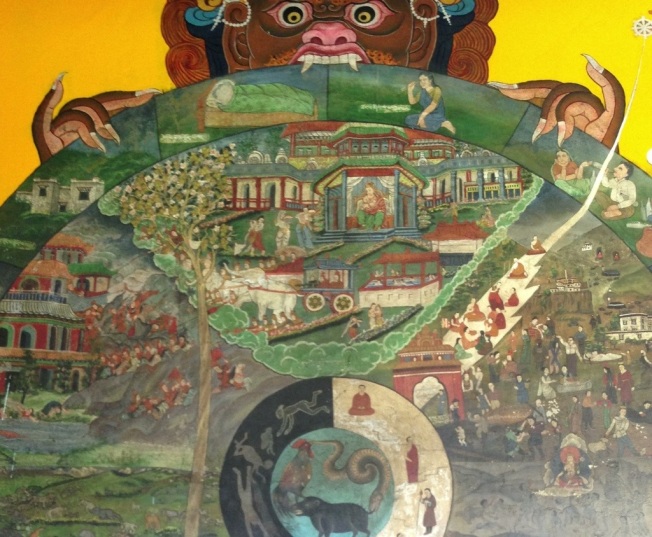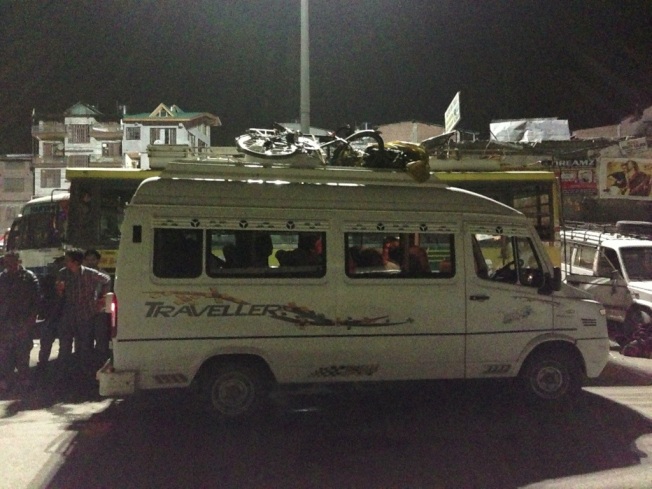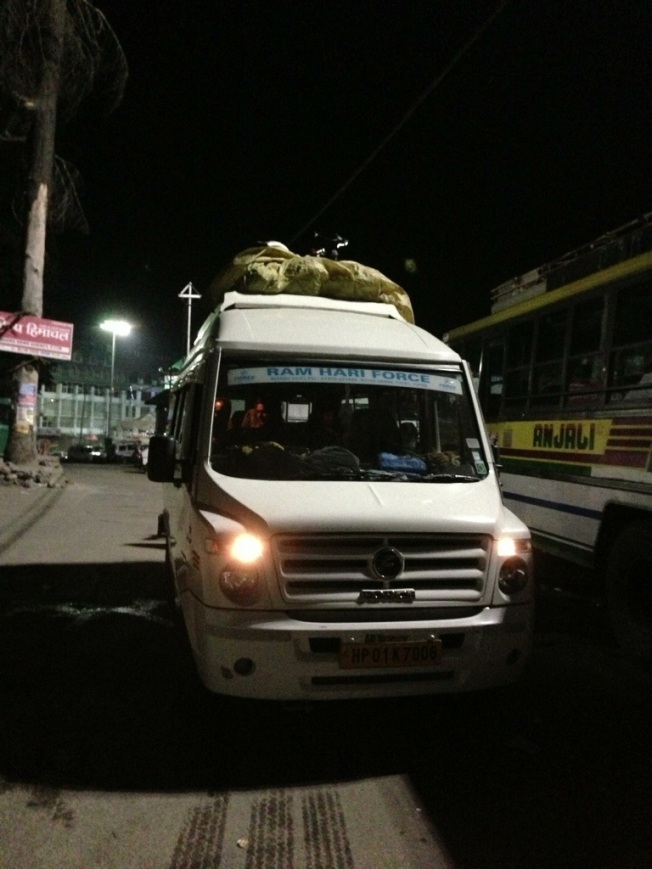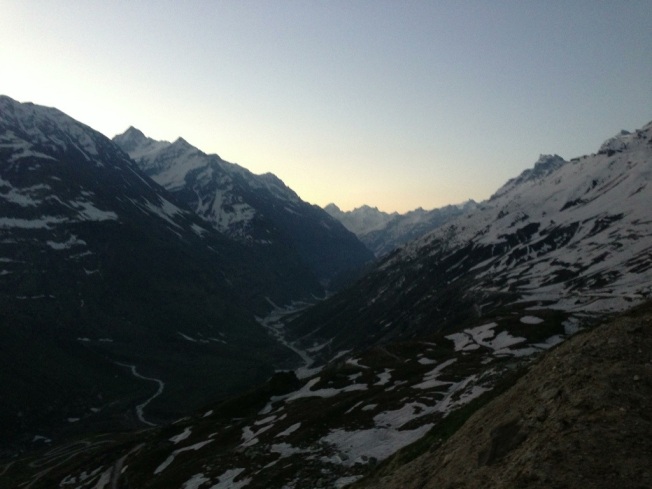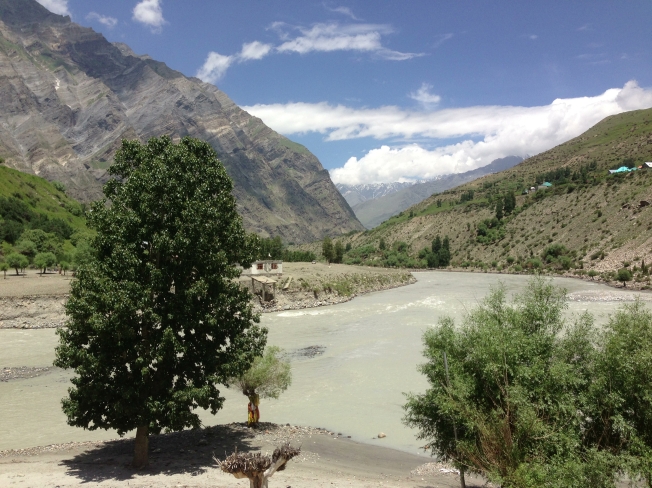 With some regret I cycled away from Keylong. I could quite happily have stayed for longer but the weather and bicycle would not let me. We set off mid morning along the lower road picking up mutton momo, indian sweets and mangos from local shops. A little climb out of the town to rejoin the highway and then down into a left curve. The road went East past the confluence of the Bhagu and Chandra rivers.
With some regret I cycled away from Keylong. I could quite happily have stayed for longer but the weather and bicycle would not let me. We set off mid morning along the lower road picking up mutton momo, indian sweets and mangos from local shops. A little climb out of the town to rejoin the highway and then down into a left curve. The road went East past the confluence of the Bhagu and Chandra rivers. 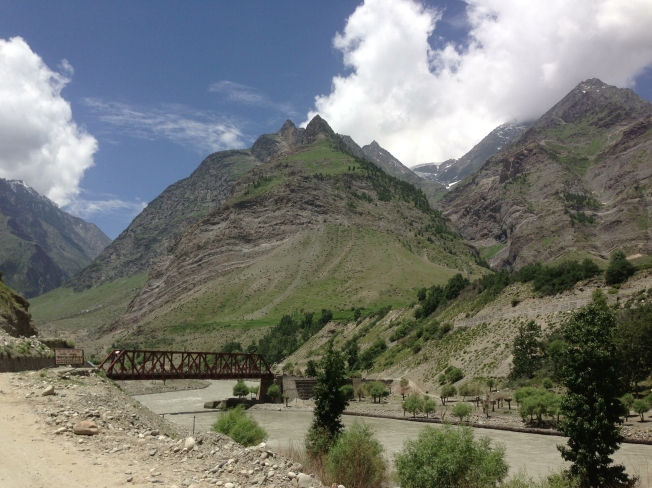
The road continued alongside the combined river of Chandrbhaga past the towns of Tandi and Thorang. In time we began to climb again as the road ran on a ledge high above the river. A driver stopped his vehicle to warn us of potential rockfalls from the cliffs above us.
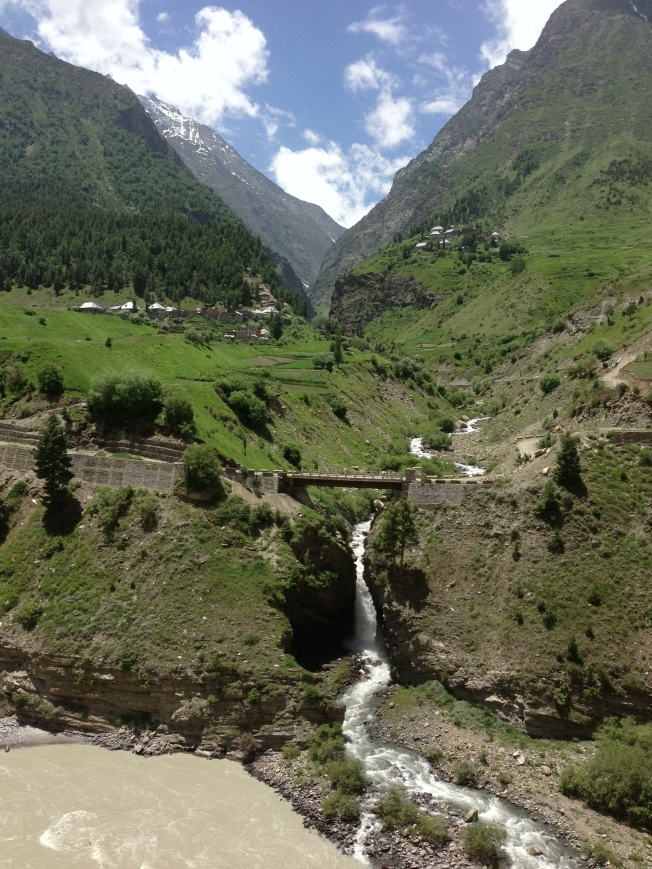 We stopped for a thali and delicious thick honey pancake at Sissu. Once again the plan was to get as close as possible to the Pass and camp. Past the settlements of Damphug and Khoksar the road began to wind slowly upwards. We camped just beyond the dhabas at Gramphu. Clouds clung to the mountains and the road disappeared above through a long series of hairpin bends. It began to rain.
We stopped for a thali and delicious thick honey pancake at Sissu. Once again the plan was to get as close as possible to the Pass and camp. Past the settlements of Damphug and Khoksar the road began to wind slowly upwards. We camped just beyond the dhabas at Gramphu. Clouds clung to the mountains and the road disappeared above through a long series of hairpin bends. It began to rain.
 I awoke early the next day, cooked breakfast and began the long ride up towards the pass. The sky was clear and the sun began to heat up the road. Although at just under 4000 metres it was not the highest pass to cross it was to be the most difficult and longest climb. Rohtang literally means ‘piles of bodies’ and refers to the number of people that had died having been caught by the extreme changes of weather that can occur there. The road surface was fairly mixed with some sections reduced to rubble. Luckily, and as with the journey from Leh as a whole, the weather held up and the morning sun lifted the clouds away from the summit of the Pass. It was slow hard work and I rested about halfway and waited for Joachim but could still see his tent pitched far below. Once at the top and close to a Buddhist stupa I met an English cyclist heading to Leh on his Trek expedition bicycle. . I asked him to pass a message to Joachim that I was going to continue on past the summit and begin the ride down the other side towards Manali. The Rohtang La itself was extremely busy and crowded with Indian tourists many of whom were on day trips from Manali to visit and play in the snow.
I awoke early the next day, cooked breakfast and began the long ride up towards the pass. The sky was clear and the sun began to heat up the road. Although at just under 4000 metres it was not the highest pass to cross it was to be the most difficult and longest climb. Rohtang literally means ‘piles of bodies’ and refers to the number of people that had died having been caught by the extreme changes of weather that can occur there. The road surface was fairly mixed with some sections reduced to rubble. Luckily, and as with the journey from Leh as a whole, the weather held up and the morning sun lifted the clouds away from the summit of the Pass. It was slow hard work and I rested about halfway and waited for Joachim but could still see his tent pitched far below. Once at the top and close to a Buddhist stupa I met an English cyclist heading to Leh on his Trek expedition bicycle. . I asked him to pass a message to Joachim that I was going to continue on past the summit and begin the ride down the other side towards Manali. The Rohtang La itself was extremely busy and crowded with Indian tourists many of whom were on day trips from Manali to visit and play in the snow.
The road down from the Rohtang pass was in a bad way. Extreme mud made the going difficult. However once past the initial few kilometres it became a smooth fast road leading down and joining the Beas river running towards Manali. At just 51 kilometres from the Rohtang La Manali, the final destination, was easily reachable before nightfall.
It was a great achievement to have completed the 11 day cycle ride from Leh to Manali but at the same time I was a little sad that it was over. It had been the bike ride of a lifetime and felt so, so lucky to have had the opportunity to make this trip.


